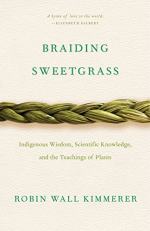|
This section contains 1,654 words (approx. 5 pages at 400 words per page) |

|
Summary
“Windigo Footprints” introduces Windigo, a mythical creature prominent in Ojibwe cautionary tales. Windigo is a monster that comes out in the wintertime, when food is scarce, and eats people. Kimmerer discusses Windigo’s relevance in today’s America: the myth is intended to strengthen self-discipline and build resistance against greed, or taking too much. Windigo is a spirit, devouring mankind, and thus represents any overindulgent, self-destructive habit known to humanity. For Kimmerer, today’s ‘Windigo’ is our tendency towards greed and individualism, threatening the concept of community which Ojibwe culture warned centuries ago needed to be held sacred. ‘Windigo thinking’ is dangerous.
“The Sacred and the Superfund” focuses on water as a clear, pure, sacred substance to all cultures. In particular, Onondaga Lake was one water source which was sacred to the people of the Haudenosaunee Confederacy, the oldest living democratic society, but...
(read more from the Burning Sweetgrass Summary)
|
This section contains 1,654 words (approx. 5 pages at 400 words per page) |

|




